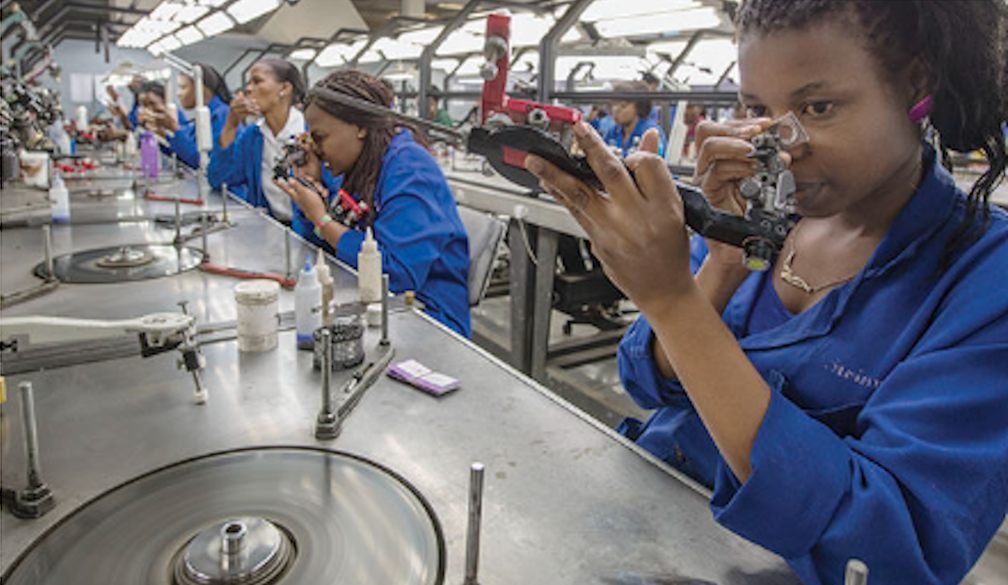Pharmaxis Cancer Drug Decreases Tumour Burden in Pre Clinical Liver Cancer Model
- Written by PR Newswire
SYDNEY, Aug. 5, 2021 /PRNewswire/ -- Clinical stage drug development company Pharmaxis Ltd (ASX: PXS) today announced the first public presentation of data from a preclinical study of PXS-5505 in the liver cancer, cholangiocarcinoma (CCA) at the Americas Hepato-Pancreato-Biliary Association (AHBPA) conference in Miami, USA.
Under the guidance of Dr Roberto Hernandez-Alejandro, MD (Chief Division of Transplantation / Hepatobiliary Surgery), a research team at the University of Rochester Medical Center, New York State, has been investigating the role of lysyl oxidase enzymes in liver cancer and whether Pharmaxis cancer drug PXS-5505 can improve the efficacy of current chemotherapy drugs by inhibiting these enzymes.
CCA is the second most frequently diagnosed primary liver malignancy and has nearly doubled in incidence over the last decade. A prominent feature of CCA is the presence of highly fibrotic tissue that increases tumour stiffness, and decreases drug perfusion.
The oral presentation by Dr Paul Burchard, MD at today's meeting covered two main aspects of the team's research.
- Firstly, they examined tumour tissue specimens collected from patients at their institution over a 10-year period and found that LOX enzymes are significantly elevated in human CCA and correlate with poor prognosis.
- Secondly, they examined the effect of PXS-5505 with or without chemotherapy treatment in a pre-clinical model of CCA and found that the combination of PXS-5505 and chemotherapy significantly improves survival, delays tumor growth, and reduces intratumoral pressure.
- Finally, they propose that PXS-5505 in combination with standard chemotherapy represents an innovative therapeutic strategy with potential for clinical translation in primary liver malignancy
Pharmaxis CEO Gary Phillips said, "The role of LOX enzymes in fibrosis is well established and there is a growing body of evidence that in cancers such as those of the liver and pancreas, the poor outcomes experienced with current chemotherapy regimens is due to fibrotic tissue restricting drug access and stimulating tumour growth. Pharmaxis is working with a number of independent research groups globally on different tumour types with our anti fibrotic cancer drug PXS-5505 and I'm very encouraged by the results presented today by Dr Burchard that show a potential disease modifying role for our drug in liver cancer.
"PXS-5505 is currently progressing well through a phase 1c/2 clinical trial looking for evidence of disease modifying effects in bone cancer myelofibrosis as a monotherapy. Exploring the potential of PXS-5505 to address liver cancers such as cholangiocarcinoma or other cancers where fibrosis is limiting the clinical benefit of current chemotherapy is something we will continue to assess with our scientific and clinical collaborators."
The phase 1c/2a trial MF-101 in myelofibrosis, cleared by the FDA under the Investigational New Drug (IND) scheme, aims to demonstrate that PXS-5505 is safe and effective as a monotherapy in myelofibrosis patients who are intolerant, unresponsive or ineligible for treatment with approved JAK inhibitor drugs. An effective pan-LOX inhibitor for myelofibrosis would open a market that is conservatively estimated at US$1 billion per annum.
AUTHORISED FOR RELEASE TO ASX BY:
Pharmaxis Ltd Disclosure Committee. Contact: David McGarvey, Chief Financial Officer and Company Secretary: T +61 2 9454 7203, E david.mcgarvey@pharmaxis.com.au[1]
CONTACT: Media: Felicity Moffatt: T +61 418 677 701, E felicity.moffatt@pharmaxis.com.au[2] Investor relations: Rudi Michelson (Monsoon Communications) T +61 411 402 737, E rudim@monsoon.com.au[3]
Join the Pharmaxis mailing list here[4]
Follow us on LinkedIn[5] and Twitter[6]
About Pharmaxis
Pharmaxis Ltd is an Australian clinical stage drug development company developing drugs for inflammatory and fibrotic diseases, with a focus on myelofibrosis. The company has a highly productive drug discovery engine built on its expertise in the chemistry of amine oxidase inhibitors, with drug candidates in clinical trials. Pharmaxis has also developed two respiratory products which are approved and supplied in global markets, generating ongoing revenue.
Pharmaxis is developing its drug PXS-5505 for the bone marrow cancer myelofibrosis which causes a build up of scar tissue that leads to loss of production of red and white blood cells and platelets. The US Food and Drug Administration has granted Orphan Drug Designation to PXS-5055 for the treatment of myelofibrosis and permission under an Investigational Drug Application (IND) to progress a phase 1c/2 clinical trial that began recruitment in Q1 2021. PXS–5505 is also being investigated as a potential treatment for other cancers such as liver and pancreatic cancer.
Other drug candidates being developed from Pharmaxis' amine oxidase chemistry platform are targeting fibrotic diseases such as kidney fibrosis, NASH, pulmonary fibrosis and cardiac fibrosis; fibrotic scarring from burns and other trauma; and inflammatory diseases such as Duchenne Muscular Dystrophy.
Pharmaxis has developed two products from its proprietary spray drying technology that are manufactured and exported from its Sydney facility; Bronchitol® for cystic fibrosis, which is approved and marketed in the United States, Europe, Russia and Australia; and Aridol® for the assessment of asthma, which is approved and marketed in the United States, Europe, Australia and Asia.
Pharmaxis is listed on the Australian Securities Exchange (PXS). Its head office, manufacturing and research facilities are in Sydney, Australia. www.pharmaxis.com.au[7]
About PXS-5505
PXS-5505 is an orally taken drug that inhibits the lysyl oxidase family of enzymes, two members LOX and LOXL2 are strongly upregulated in human myelofibrosis. In pre-clinical models of myelofibrosis PXS-5505 reversed the bone marrow fibrosis that drives morbidity and mortality in myelofibrosis and reduced many of the abnormalities associated with this disease. It has already received IND approval and Orphan Drug Designation from the FDA.
About myelofibrosis
Myelofibrosis is a disorder in which normal bone marrow tissue is gradually replaced with a fibrous scar-like material. Over time, this leads to progressive bone marrow failure. Under normal conditions, the bone marrow provides a fine network of fibres on which the stem cells can divide and grow. Specialised cells in the bone marrow known as fibroblasts make these fibres.
In myelofibrosis, chemicals released by high numbers of platelets and abnormal megakaryocytes (platelet forming cells) over-stimulate the fibroblasts. This results in the overgrowth of thick coarse fibres in the bone marrow, which gradually replace normal bone marrow tissue. Over time this destroys the normal bone marrow environment, preventing the production of adequate numbers of red cells, white cells and platelets. This results in anaemia, low platelet counts and the production of blood cells in areas outside the bone marrow for example in the spleen and liver, which become enlarged as a result.
Myelofibrosis can occur at any age but is usually diagnosed later in life, between the ages of 60 and 70 years. The cause of myelofibrosis remains largely unknown. It can be classified as either JAK2 mutation positive (having the JAK2 mutation) or negative (not having the JAK2 mutation).
Source: Australian Leukemia Foundation: https://www.leukaemia.org.au/disease-information/myeloproliferative-disorders/types-of-mpn/primary-myelofibrosis/[8]
Forward-looking statements
Forward–looking statements in this media release include statements regarding our expectations, beliefs, hopes, goals, intentions, initiatives or strategies, including statements regarding the potential of products and drug candidates. All forward-looking statements included in this media release are based upon information available to us as of the date hereof. Actual results, performance or achievements could be significantly different from those expressed in, or implied by, these forward-looking statements. These forward-looking statements are not guarantees or predictions of future results, levels of performance, and involve known and unknown risks, uncertainties and other factors, many of which are beyond our control, and which may cause actual results to differ materially from those expressed in the statements contained in this document. For example, despite our efforts there is no certainty that we will be successful in developing or partnering any of the products in our pipeline on commercially acceptable terms, in a timely fashion or at all. Except as required by law we undertake no obligation to update these forward-looking statements as a result of new information, future events or otherwise.
View original content:https://www.prnewswire.com/news-releases/pharmaxis-cancer-drug-decreases-tumour-burden-in-pre-clinical-liver-cancer-model-301348985.html[9]
References
- ^ david.mcgarvey@pharmaxis.com.au (www.prnasia.com)
- ^ felicity.moffatt@pharmaxis.com.au (www.prnasia.com)
- ^ rudim@monsoon.com.au (www.prnasia.com)
- ^ here (www.pharmaxis.com.au)
- ^ LinkedIn (www.linkedin.com)
- ^ Twitter (twitter.com)
- ^ www.pharmaxis.com.au (www.pharmaxis.com.au)
- ^ https://www.leukaemia.org.au/disease-information/myeloproliferative-disorders/types-of-mpn/primary-myelofibrosis/ (www.leukaemia.org.au)
- ^ https://www.prnewswire.com/news-releases/pharmaxis-cancer-drug-decreases-tumour-burden-in-pre-clinical-liver-cancer-model-301348985.html (www.prnewswire.com)
Read more https://www.prnasia.com/story/archive/3465944_CN65944_0









